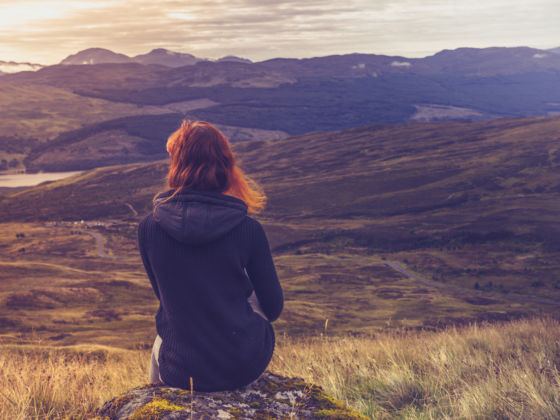You cannot remember waiting so long for a cup of joe in your working memory. You can recall first beginning to drink coffee around 16 years old, after years of gateway caffeine consumption. All those green tea lattes and passion-berry lemonades your mom bought for you after soccer practice were suddenly not enough to fuel your 18-hour school days. You woke up at 5:45am to pick up your romantic partner (and even then, you called each other “partners,” because — let’s be honest — no one likes labels), finished school around 2, and drove straight over to your best friend’s house for some video games. After nearly falling asleep on the toilet, you were invited to dinner at your partner’s home; you went, things got awkward with the parents, you fooled around in a car, and you went home. It was nearly 11pm. Your parents asked why you were going to bed so early.


By the fourth or fifth time you’d repeated this process, you realized your mocha frappuccinos were becoming useless. The following morning, at 6:15, you took a risk: “Can I please have a macchiato? I have no clue what it is but I like to try new things. Oh, and three pumps of caramel please.” Suddenly you were hooked, and now, after moving quickly to desperately black, burnt coffee, here you are, standing patiently in the infinitely winding line at the Park City Java Cow, desperate to start your day right.
It has only been five years since you first enjoyed a fresh Ethiopian-farmed brew, but look how far you have come. You’re at the Sundance Film Festival, one of the most famous of its kind in the world, and the birthplace of many a career in modern film. The people in front of you in line all have two things in common: they all look exceedingly busy, and uncommonly beautiful. Ellen Page’s sunglasses don’t make her request for soymilk any less endearing. An entire Malibu-based public relations firm is conducting a board meeting over FaceTime after the successful premiere of their harrowing, East L.A.-set drama. You’re pretty sure you just saw Michael Cera tip a taxi driver in rupees.
It upsets you that, since arriving in Park City, you are having trouble sleeping and experiencing mild stomach aches every day. The money your parents lent you for special events — “Your first Sundance! You deserve it!” — is slipping through your hands like putty. Yesterday an acclaimed filmmaker cancelled your interview, citing uncontrollable diarrhea, only to show up two rows in front of you at a Midnight Madness screening of his friend’s movie. And, as you already know, now you are in the longest line you’ve ever been in, anxiously waiting to pay two dollars more than necessary for instant coffee.
You consider repeating this process for the sake of a good article or free promotional vodka. This is the battle you wrestle with during film festival season. In less than two months, the South by Southwest Film Festival will start, and you will need some money to go there. If you get money to go there, you’ll owe someone, and that means deadlines. Perhaps an editor-in-chief for some online magazine would prefer you went to the Miami International Film Festival that same week to see the premieres of Ibero-American independent films. You prepare mentally for the stress that comes from substituting your actual interests for a paycheck. You worry that you’ll miss Dave Grohl performing live at SXSW, just as you missed him at Sundance to watch a trashy horror-comedy.
Even worse, you realize you have returned today to a schedule not unlike your high school days, but without the romance. You wake up early each day to sub-freezing temperatures to discover your rental car is immobile. You rush to the morning’s first screening; it’s good enough, but you wouldn’t see it again, and you remember saying the same about The Catcher in the Rye in Honors English. You wait in line for half an hour for a coffee, eat a protein bar in the meantime, and hustle to the other side of Park City to a screening of Andy Heathcote and Heike Bachelier’s film The Moo Man.
At the P and I, screening several hundred journalists wait in a similar line to the one at the Java Cow. Most of them stare at their phones or rub their temples while their eyes are closed, the universal behavior of a headache victim. Like the cattle of dairy farmer Philip Hook — the subject of the film you’ll soon see — the press are herded, in groups of 20, into the requisitioned theater. Some complain about the weather; others try in vain to make conversation. As you shuffle in, you come to terms with the fact that you are having a collective experience. Everyone in these lines with you waited for coffee, and everyone wants to see the same movies. You are one in a million — everyone finds the cold of Park City in Sundance exhausting. You are only human, which is, you suppose, better than being an animal.
You finally sit down and begin to watch a documentary about Hook & Son, a struggling dairy farm in the United Kingdom. Philip, the “Son,” tends to his pregnant cows with kindness and a love uncommon in his industry; he knows each of his cows by name. He cries softly when Ida, “the queen of the cream,” dies from old age. The photography is absolutely beautiful, with images of cattle slurping river water and lying down in flowered fields, and suddenly, the anxiety and pain of a difficult day evaporates. You cry, and book your ticket to Austin in March.